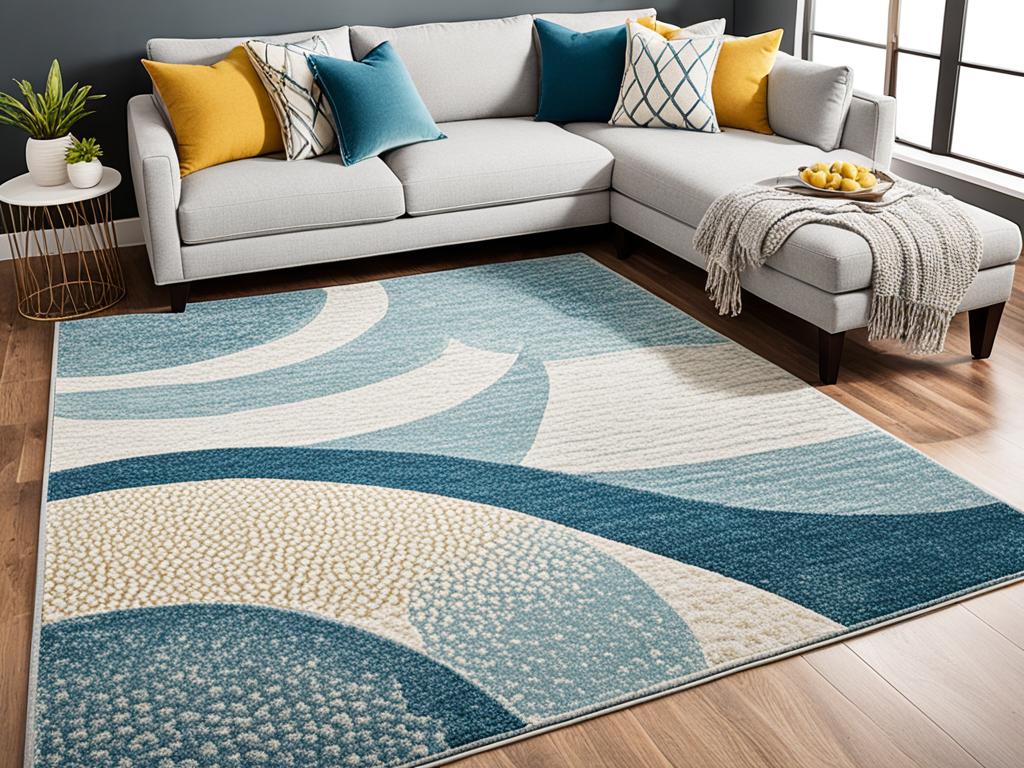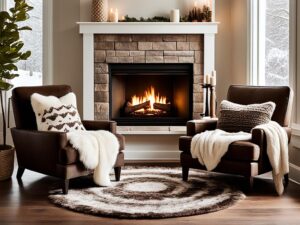Welcome to our comprehensive guide on how to coordinate rugs in your home. If you’ve ever struggled with finding the right rug styles, textures, and colors to create a cohesive look, you’re in the right place. In this article, we’ll provide you with expert tips and tricks to help you master the art of rug coordination.
Key Takeaways:
- Coordinating rugs is essential for creating a harmonious and inviting environment in your home.
- Consider the layout and function of each space when choosing rug shapes in an open floor plan.
- In adjacent rooms, use complementary colors and patterns to create a cohesive look.
- Texture and overall design should also be taken into account for rug coordination.
- Experiment with different color combinations and mix and match rugs to personalize your space.
Coordinating Rugs in an Open Floor Plan
In open concept floor plans, coordinating rugs play a significant role in home decor, effectively separating different zones while maintaining cohesion. When it comes to rug style coordination, there are a few key considerations to keep in mind.
Assess the Layout and Functionality
Start by assessing the layout of your space and determining the function of each area. This will help you determine the size and shape of rugs that work best in each location. Consider the traffic flow and the furniture arrangement to ensure the rugs fit seamlessly into the overall design.
Utilize Runners for Seamless Transitions
For areas such as hallways or in front of sinks, consider using runners that match the larger rugs in the adjacent rooms. This allows for a seamless transition from one space to another and creates a cohesive look throughout the open floor plan.
Anchoring the Seating Area with a Large Area Rug
In the living room or family room, it’s essential to choose an area rug that is large enough to ground all of the furnishings and visually connect the entire seating area. This creates a focal point and brings a sense of unity to the space. Consider the shape of the room and the configuration of the furniture when selecting the size and shape of the rug.
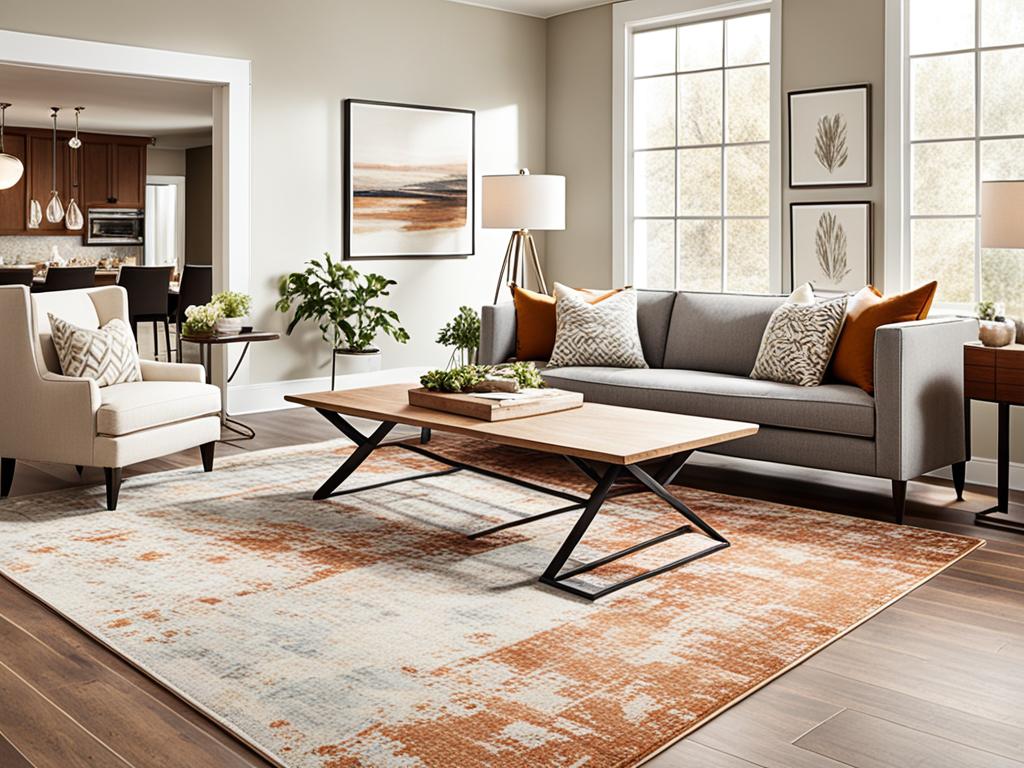
With these tips in mind, coordinating rugs in an open floor plan can be a fun and creative process. By carefully considering the layout, functionality, and size, you can create a beautifully coordinated space that is visually appealing and cohesive.
Coordinating Rugs in Adjacent Rooms
When it comes to coordinating rugs in adjacent rooms, there are two key tricks you can use: color and pattern. By strategically selecting rugs that complement each other, you can create a cohesive and visually pleasing space. Here are some tips to help you achieve the perfect rug coordination:
- Identify the primary color scheme in both rooms: Start by analyzing the dominant colors in each room. Look for rugs that have complementary colors or patterns that harmonize with the existing color palette. This will help create a seamless transition between the two spaces.
- Vary the scale of each pattern: If you decide to use patterned rugs in both rooms, consider varying the scale of each pattern. This will add visual interest and prevent the space from feeling too busy. Remember to balance bold patterns with more subtle ones to maintain a harmonious look.
- Use the same or complementary colors for patterned rugs: If you choose two different patterned rugs for the same area, try using the same or complementary colors within the patterns. This will tie the rugs together and create a cohesive look.
- Consider texture: Texture plays a crucial role in rug coordination. To add depth and visual interest, consider using natural fiber rugs or layering rugs. These textures can enhance the overall aesthetic and create a more inviting atmosphere.
By following these tips, you can easily coordinate rugs in adjacent rooms and create a visually stunning space that flows seamlessly from one room to another.
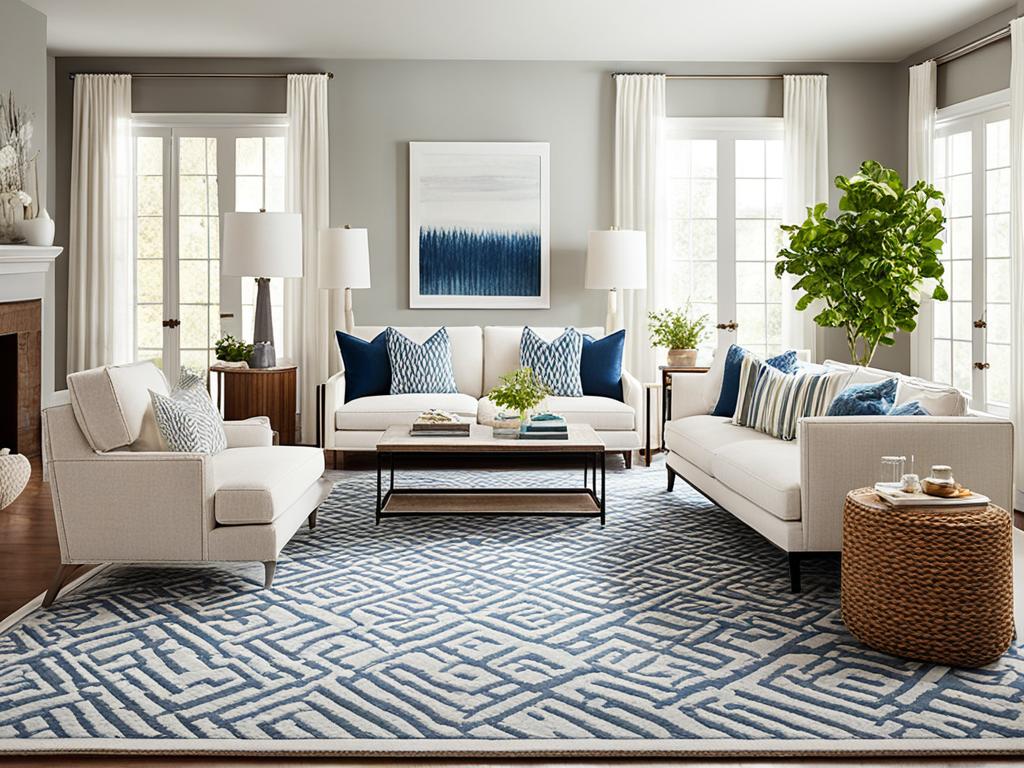
Creating a Cohesive Look
To achieve a cohesive look in your home, it’s important to consider the overall design and style of your space when coordinating rugs. By choosing rugs that complement your existing decor and reflect your personal taste, you can create a harmonious and visually appealing environment.
One strategy for creating cohesion is to select rugs with complementary colors that are repeated throughout different areas of your home. This repetition of colors helps to establish a sense of unity and flow. For example, if you have a blue rug in your living room, consider incorporating smaller blue accents rugs in adjacent rooms or in open floor plans.
In addition to color coordination, incorporating elements of texture can add interest and variety to your space. Consider mixing and matching rugs with different textures to create a visually dynamic look. For example, pair a plush, high-pile rug with a flat-woven rug to create contrast and depth.
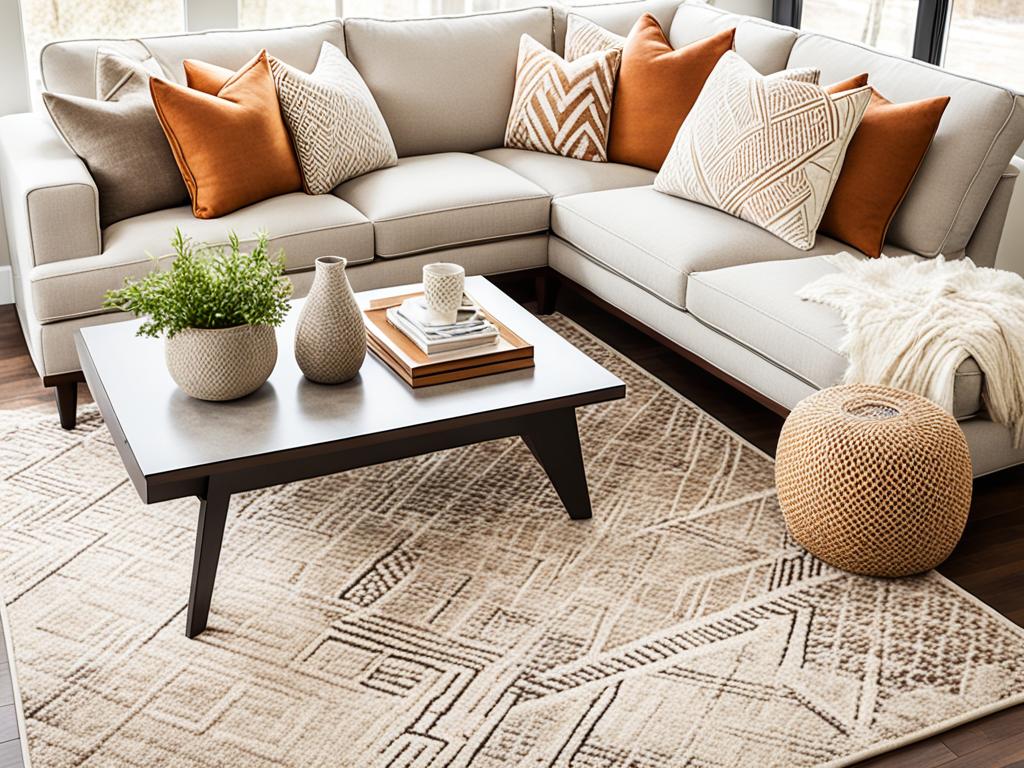
“By choosing rugs that complement your existing decor and reflect your personal taste, you can create a harmonious and visually appealing environment.”
Sample Rug Coordination Table
| Rug Style | Color | Texture |
|---|---|---|
| Traditional Oriental Rug | Earthy tones such as red, beige, and gold | Intricate patterns, soft pile |
| Contemporary Geometric Rug | Neutral shades like gray, white, and black | Flatweave, minimal texture |
| Coastal Striped Rug | Soft blues and whites | Natural fibers like jute or seagrass |
Table: Sample Rug Coordination
Winning Color Combinations
When it comes to coordinating rugs, choosing the right color combinations is key. The right color pairing can enhance the overall aesthetic of your space and create a harmonious look. Here are some winning color combinations to consider:
- Sage and Cream
- Tobacco and Rust
- Blue and Grey
When selecting coordinating rug colors, it’s important to match warm tones with warm tones and cool tones with cool tones. This will create a visually pleasing and balanced look. Additionally, keeping the lightness/darkness of the coordinating rugs similar can help achieve a cohesive appearance.
| Color Combination | Description |
|---|---|
| Sage and Cream | A fresh and natural combination that brings a sense of tranquility to your space. |
| Tobacco and Rust | Warm and earthy hues that create a cozy and inviting atmosphere. |
| Blue and Grey | A cool and neutral pairing that adds a touch of elegance and sophistication. |
Conclusion
Coordinating rugs is an essential aspect of home decor, whether you have an open floor plan or adjacent rooms. By carefully considering color, pattern, texture, and overall design, you can create a harmonious and inviting environment that reflects your personal style and enhances the beauty of your home.
When it comes to rug pairing ideas, don’t be afraid to think outside the box and mix and match different rugs. Combining rugs of various styles, sizes, and shapes can add visual interest and create a unique and personalized look. Just remember to maintain a sense of cohesiveness by considering complementary colors or repeating elements throughout different areas.
Your home is a reflection of your personality and taste, so make it a place you love. Experiment with different rug combinations, and have fun exploring the endless possibilities of coordinating rugs for your home decor. Whether you prefer a traditional, modern, or eclectic style, there are rug pairing ideas out there that will perfectly complement your aesthetic and create a visually stunning space.
